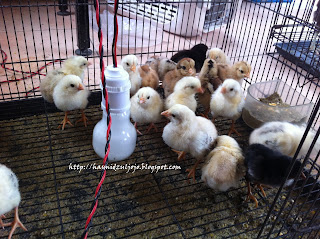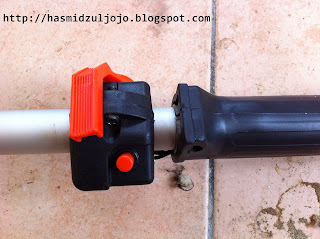As years passed by,so did my experiances with my gamefowls.I will be covering some vaccination program that I administrated last few days.
I do some reading on the web to find the possible problems that occurs on my backyards.My finding was, most of my bird having a minor respiratory problem and a fowl pox.The clinical signs are the same as prescribe on my reading.
To counter this,I buy vaccines from local poultry store and administrate it myself.
 |
| Newcastle-Infectious Bronchitis vaccine |
 |
| Mixing the dry tablet with sterile diluent. |
 |
| Administrate thru nose |
Some note in adminstrating vaccine
Poultry vaccines are biological products that induce an immune response to the specific
disease causing agents. Depending on the vaccine, they can be administered in various
ways, all of which are discussed in this manual.
Depending on the type of antigen in the vaccine, the birds’ immune system will react,
creating a “memory” response of antibodies and immune cells. The more a bird is exposed
to the same antigen, the greater the antibody response and resulting protection. This is the
reason many flocks are vaccinated multiple times for the same disease – to maximize the
immune system’s response.
Vaccines for poultry come in three general forms: Modified or Attenuated (Live), Inactivated (Killed), and Recombinants. Live vaccines are strains that are naturally or genetically modified milder forms of field strains. Inactivated vaccines are whole viruses or bacteria that have been inactivated during production and formulated into an injectable form. Recombinant vaccines are made by using live virus or bacteria as a vector to transport the gene coding for the protective antigen of a second infectious agent for which immunity is desired.
For all vaccines:
Vaccine should arrive with cool packs in a well-insulated box
If vaccine arrives hot, call manufacturer or distributor.
Storage temperature = 35-45º F (2-8º C).
Avoid freezing, extreme heating and intense light.
For Live Vaccines:
Transport to farm in cooler with ice packs to keep temperature constant.
Mix with diluent (reconstitute) just before application.
For Inactivated Vaccines:
Remove 24 hours prior to vaccinating so that the product can warm to room temperature.
Also, can use warm water bath–do not exceed 100º F for more than 5 hours .
Do not leave bottles in direct sunlight during transport to farm.
Gently agitate bottles thoroughly prior to use.
NDIB vaccine administration
The vaccination will only be considered successful if the drop (0.03 ml) is placed into
the eye or nasal cavity and absorbed. For this to occur, it is important to wait a few
seconds after administering the drop, before releasing the bird.
If the drop is not totally absorbed, a new drop should be administered.
To prevent the contents of the vaccine vial from getting warm against the hands of
the vaccinator, divide the contents of the reconstituted vaccine into two or three
empty vials, and alternate their use while keeping the others in a cooler with ice.
Excerption from Vaccination Procedure Guide Cobb-vantress
Chicken Scratch, LLC
Cobb Europe Ltd
Cobb-Vantress Brasil. Ltda.
Embrex, Inc
IDEXX Laboratories
Klaus Muller-Molenar
Merial
Proavica
Intervet/Schering Plough Animal Health
Tyson Foods, Inc
Tierarztpraxis MMT-Germany
Hopefully you guys out there can try to impliment solid vaccination to improve our beloved gamefowl for a better living.

























